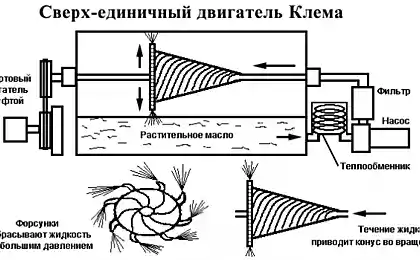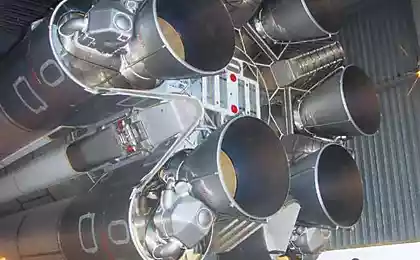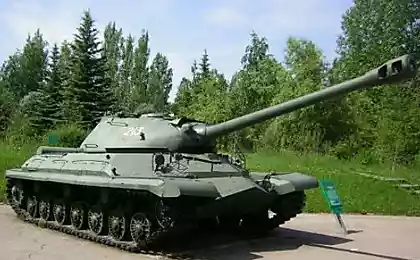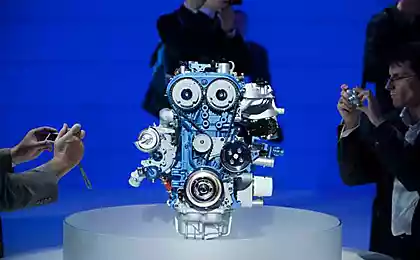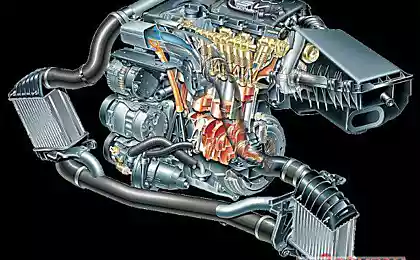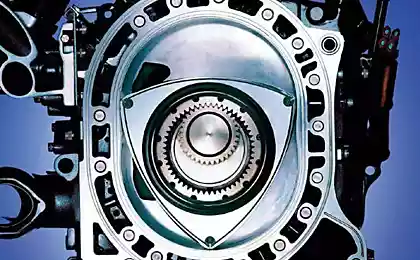944
Fuel consumption
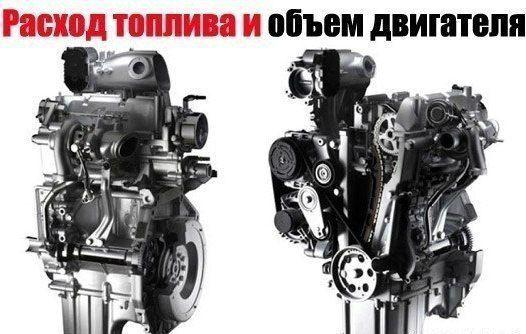
Fuel consumption and engine size
Many motorists are concerned about - how associated fuel consumption and engine size. It was logical that if a large displacement (eg - 2, 0 and 2, 5 liters), then the flow and more! But this is not always so happens that the engine capacity of 1, 5 liters of "eat" more than engine capacity of 2, 0 liters. Why is this happening?
Thus, fuel consumption and engine size.
In the brain, a logical line is drawn: the more volume - the more fit this engine fuel, and thus the flow rate will be much higher. But why the practice is sometimes shows the opposite picture? For example, the engine of a modern car with a volume of 2 liters has 0 expenses (mechanics about 7-8 liters, to take the same Skyactiv by Mazda), but the car is not quite fresh domestic manufacturer of the engine 1, 5 liters will have a flow rate in 8 - 9 liters. So where is the logic?
It depends on many factors.
1) Workability. The first reason is the manufacturability of the motor vehicles are evolving very quickly, and is particularly strong engines evolve and become more powerful and more economical. But how is this possible? Quite simply there are new technologies that increase the power and reduce fuel consumption. Simple examples of this valve 16 instead of 8 (faster fuel injection and discharge of exhaust gases), or in place of the carburetor injector (injector almost never spill fuel and spark will flood unlike the carburettor), also appeared multipoint fuel injection into the cylinders, etc. . In general, there are now a lot of technologies that are at the mechanical level, allow the engine to save fuel, without losing power.
2) Drivers. It is no secret that today, in the "injection" of the car, you can change the program flash unit ECU (the brain of the engine). The car with the help of firmware can be very economical! When I stitched 2 0 liter FORD FOCUS, and reached a rate of 7 liters in the city. BUT these "economical" firmware suffering engine power, that is, the car gets "choked" with places with "probuksonom" it will not touch. The truth can be put and "powerful" firmware here everything is on the contrary, consumption will increase, and multiply, but also increase the power many times. Here you need to choose what to you need to.
3) The riding style. Here, as the saying goes, you can save - drive safely, and can heat the pedal to the floor, respectively, and costs increased. From the style of driving consumption it is highly dependent. For example - my friend on the KIA RIO in the previous generation (mechanics), the consumption of the engine 1, 4 liters and 10 liters in the summer, but he squeezes out of his car all you can, almost always turns the "engine"! And I have with the engine 1, 6 liters and fuel consumption with a gun 9, 0 liters per 100 km (more in the article - Chevrolet Aveo fuel consumption). While the engine is more powerful and automatic.
4) technical serviceability of the car. A very broad topic on consumption can affect a lot. If you have not changed the elementary air and fuel filters have not been cleaned fuel rail, the fuel consumption will be increased. It may engine 1, 6 liters (old filters) spend more than 2 liters 0 (but with fresh filters). So watch out for the filters and change them in time.
5) Transmission. The next point in our article - the fuel consumption and engine size, it is logical to talk about the type of transmission. Here I think everything is clear, mechanics and advanced machines (variable speed, DSG is automatic or six or more gears) will use less than the old machines for three - four assists. Thus, if the vehicle with the engine 1, 4 liters equipped with automatic transmission 4, it will spend more than a vehicle engine 2, liters 0, but with a variator or automatic 6-Th transmissions.
6) A turbine or turbine. If you take two engines - such as a conventional 1, 4-liter turbocharged and 1, 6 liters. The second 1, 6 liters, will not only be much more economical (economy sometimes reached 20%), but much more powerful and more productive.
7) Report savings. Let's really think about it - why sometimes the engine 1, 4 liters is much voracious than 1, 6-liter or 2 liters 0? It's all about the power of the engine. If you take the same car with the same mass but with different engines (regular, non-turbo), it turns out. To achieve the same performance acceleration, the engine 1, 4 liters need to work at higher speeds, and therefore it is almost always need to unwind even if the need to reach 60 km / h, otherwise your car will simply not go. If we turn the engine over, then there will be more consumption, it is logical. Now the engine 1, 6 liters, it is much more powerful than his brother, that he reach 60 km / h it does not need big revolutions, it will work in the middle mode, respectively, and fuel consumption will not go off-scale.
That's all. I do not think that the larger motors are almost always it's just a "killer" of gasoline, this is not always the case. A simple example from my life experience - there are two cars Nissan Almera (1.6 liter, automatic) and the Nissan Teana (2, 5-liter CVT) rate at Nissan Almera almost the same as that of the Teana - 12 - 14 liters, while in winter Almera beginning to spend more, approximately 14 liters, at the expense Teana onboard computer 13, 1! Something like this! So you need to think of what to buy, read on the internet is not always the fuel consumption and engine size directly proportional.
--img2--
Source:




